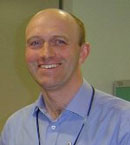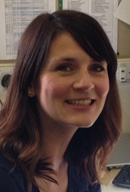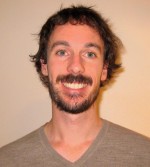 The MBBS programme is currently undergoing the first major curriculum review for 18 years. A major part of this is to enhance the professional development of medical students with a major focus on developing resilience and maintaining compassion and empathy. We are keen to develop this, and other themes, using an evidence based approach through developing and adapting effective strategies that are being used in other institutions.
The MBBS programme is currently undergoing the first major curriculum review for 18 years. A major part of this is to enhance the professional development of medical students with a major focus on developing resilience and maintaining compassion and empathy. We are keen to develop this, and other themes, using an evidence based approach through developing and adapting effective strategies that are being used in other institutions.
To this end, we held a symposium on resilience in February in which the evidence was explored and “tasters” in specific techniques were demonstrated. We were particularly keen to explore how the medical school in Cardiff have developed this strand in their curriculum both in terms of a deeper understanding of the principles but also in terms of their practical implementation. Cardiff was a particularly appropriate model for us to develop as they are leading thinkers in this area and are a medical school of similar size and reputation to Newcastle.
The ERDP Development Grant proposal was for a small team from the MBBS programme to visit Cardiff University at the invitation of Professor Debbie Cohen in order to understand the pedagogy and the practicalities of adapting their model to our own curriculum. In addition provisional thoughts about collaborative pedagogic research in this area, to include internationalisation through NUMed would be developed.
Key principles taken from the visit.
Colleagues at Cardiff identified the importance of badging issues around resilience smartly in order to improve student engagement, for example instead of resilience, they use the word emotional intelligence, and for reflection, they used the word “change story”. They also emphasized the need to find exciting ways to make some of these concepts more real and to strive for authenticity in the teaching. They use near peer experiences to engage the students, for example, they used foundation year and core trainees for teaching notions of resilience to third year students.
Another key theme that Cardiff emphasise is the need to focus on positive emotions and focus on achievements and the positive attributes that protect against some of the stresses of being a medical student and a foundation year doctor. There was mutual recognition from colleagues in Cardiff and the visitors from Newcastle, that work environment is key and that understanding and having had experience of working within the environments in which students train and junior doctors work is central to supporting well-being.
In terms of Cardiff’s approach to resilience teaching and training, they did not feel that it should be mandatory but if it was, it would be more appropriate towards the end of the course in preparing the students for entry into the workplace. With regard to measurements of resilience, the consensus was that these needed to be multiple in order to be robust and that various tools were available, however the overriding imperative was to decide what one wanted to get out of the particular tool that you chose and why.
Embedding resilience into the new curriculum
In year 1 the team identified the need to develop a didactic session entitled ‘Becoming a doctor’ which introduced notions of professional identity formation, the hidden curriculum and resilience. Linked to the didactic session would be a seminar looking at self-awareness, one’s values and possible clashes with the values of the profession through the use of interactive activities designed to engage the students and to open their perspective around who they are and their journey to being doctors. Embedding notions of self-care within the academic mentorship role was also identified as another achievable outcome. The establishment of mental health first aid training was proposed, possibly linking this with a tool kit in dealing with the stress of sitting a first OSCE type examination.
In terms of year 2 linking teaching of the neurobiology of stress to notions of resilience was discussed, possibly with a linked seminar to explore this further. Also within year 2, the end of year transition course in the new curriculum could be developed to improve notions of listening and dealing with emotions prior to the student becoming more embedded in the clinical environment.
In year 3 staff development around mentoring, role modelling, and using key aspects of Schwartz and Balint style approaches were thought to be important. The use of a weekly seminar session in semester 1 to provide a space for reflection was seen as a key area to use some of these skills. Also identified in year 3 for was the scope for integrated days in semester 2 where generic issues across rotations could be discussed. Adolescent health has been suggested as a potential topic and this would both be a useful learning tool around their development as doctors but would also resonate in terms of their own self-care.
In year 4 the emphasis would be on inter and intra- professionalism and getting along with others, with looking to develop skills in dealing with conflict and managing uncertainty. Also in year 4 there are plans to use longitudinal clinical placements, the evidence suggests that this would reduce empathy erosion and through embedding students in teams does much to support professional identify and improve resilience.
Year 5 would revisit some of the notions that were introduced in year 1 such as the hidden curriculum and role models. Considering both these concepts though areas such as human factors and the use of simulation would allow student develop a better understanding of how these issues could affect both one personally and be related to patient safety. In addition, educational supervision in year 5 would review reflections within a portfolio. Revisiting self-care and resilience through near-peer experiences would be appropriate. This is to some extent this is already been developed within the current PDS 6 course.
Finally with regard to research, the team concluded that getting some baseline data using a mix methodology approach comparing notions of resilience though different cultural perspectives and what constitutes good role models across cultures would be a good starting point.
Dr Stephen Jones, Director of Studies
Dr Dominic Johnson, Professionalism Lead
Dr David Kennedy, Degree programme Director





